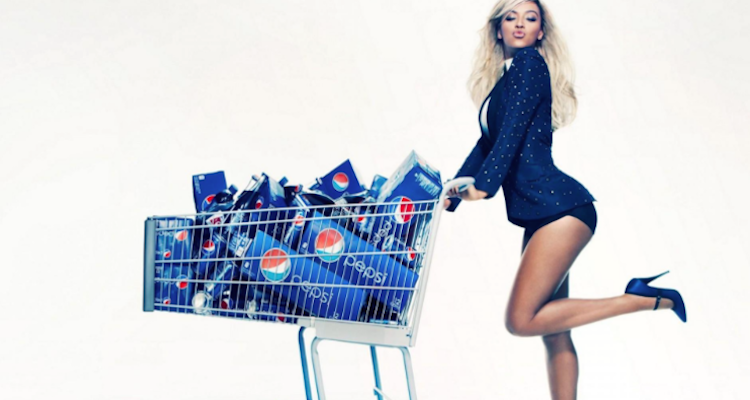What you need to know to create one that works
Sponsorship has been outpacing the growth in advertising spending since the financial crisis in 2008 – proving that collaborations are more successful than traditional, standalone advertising. It’s the ability to link up with another partner (be that a brand or a celebrity) that creates an intrinsic link to an emotional tie-in that is a requirement for growth and conversion. Customers are savvier than ever and will not be fooled by whitewash alignment, no matter how outstanding the creative.
Compounding that is the sheer volume of #ads we see – Americans will be exposed to up to 10,000 marketing messages each day. Partnerships cut through the clutter. Effectively and efficiently. Done correctly, talent partnerships can propel a brand. Conversely, the wrong partnership can be devastating.
Strategic planning, clear objectives, and alignment is necessary. With over $63 billion spent in sponsorship and talent partnerships, this is a big business – and only continues to grow.
Talent partnerships gone wrong
But not all dollars are spent wisely. With many successful partnerships, there are almost an equal number of failed collaborations. Whilst most go unnoticed to the public, the amount of money spent by the brand certainly isn’t.
From Kodak’s partnership with Lady Gaga to Ariana Grande’s launch of a Starbucks drink – there are many examples of how brands can get talent partnerships wrong, and almost all are based on the lack of understanding of objectives. Whilst it’s obvious what the brand is keen to achieve (reach and awareness), many brands don’t truly understand what is driving the talent (besides cash). This leads to vegans launching non-vegan drinks (Ariana Grande x Starbucks) and musicians launching makeup brands when they’ve publicly denounced makeup (Alicia Keys).
One shot – make sure it’s perfect
Unfortunately, most brands only have one shot to get a talent partnership right. This is caused by limited brand budgets and only so much space in the option pool for equity. But even if you had unlimited budget and lots of equity to give away, customers won’t be fooled. Customers want authenticity – if a brand even alludes to selling out, customers will leave in droves.
To create a truly successful talent partnership, there are 5 key tips to take:
- Consult an Expert
Too often I see brands relying on their best celebrity customer to offer equity to in order to promote the brand. Whilst this certainly ensures authenticity, what is missing is everything else. There is more to creating a talent partnership than love of the brand – and if you are going to give equity or cash to talent collaboration, you want to ensure you get as much bang for your buck as you can.
Although advertising and PR agencies can understand brand objectives and reach, they do not have the deep experience or relationships in the entertainment space to carve out a deal. Seek out someone who has delivered talent partnerships in the past and can ensure your brand is leading the agenda and approaching the right talent with an offer that is enticing.
- Align Objectives
I always tell people that the day talent signs the contract is going to be the day when they are most engaged with your brand – and every day after, they become less interested and more distracted. As a reminder, talent partnerships are a side hustle – their main job, and their inner circle’s main job, is to book more shows/movies/gigs; therefore, anything that distracts from the main source of income will always be viewed as a challenge.
Look beyond cash to really dive into what drives the talent in question – the more passionate they are about what your brand stands for or is hoping to change (ie sustainability, education, etc), the more likely they will work with you effectively for the long term.
- Know the Offer
Celebrities can do more than just post about your brand to their followers – and truthfully if that’s all you are looking for, then you should just pay them for posts (rather than equity or royalties). If you are looking for a true talent partnership that includes equity and a long-term goal in mind, then you need to create a very clear service agreement. What exactly do you want them to do and how much time is it going to take? Rather than outlining “Post about the brand”, you need to get specific and outline how many posts, what kind of posts, and when those posts are posted. The more granular you can get, the better understanding both sides of the partnership will be when it comes to delivering – because everything sounds easy on paper, but with vague deliverables you often will leave disappointed.
- Have a Plan
Don’t just sign talent to your brand and hope for the best – maximize your and their time by being clear about what assets you need at the outset. If you are doing a photo shoot, shoot as much as you can with as many changes of outfits that time allows – this enables you to stockpile content that you can drip feed to your customers showing consistent engagement. As a reminder, the brand partnership in question will not always be front of mind and if your star happens to book a movie, whilst that will be great for you when the movie comes out, you are unlikely to work or develop anything when they are spending sixteen-hour days on set.
- Measure, Track and Vest
Along with objectives, there should be clear measurement in place on how the partnership is doing against those agreed objectives. I would also recommend having vesting options against deliverables so that you have a fall back to ensure everyone keeps putting in the effort required for the long haul.

